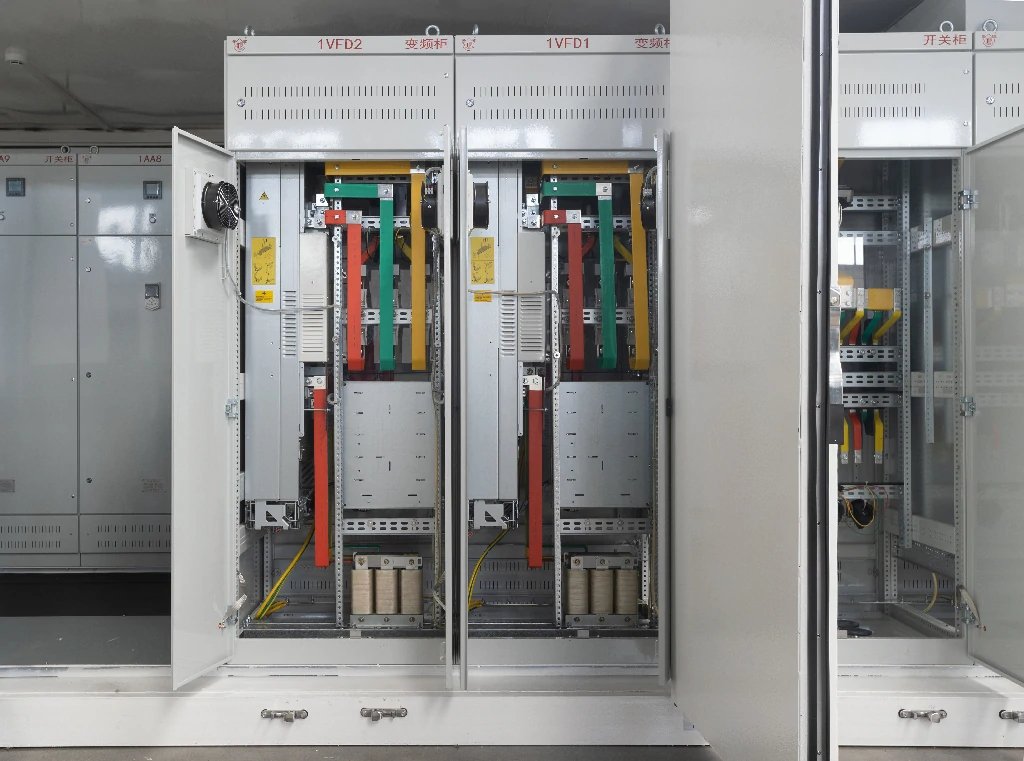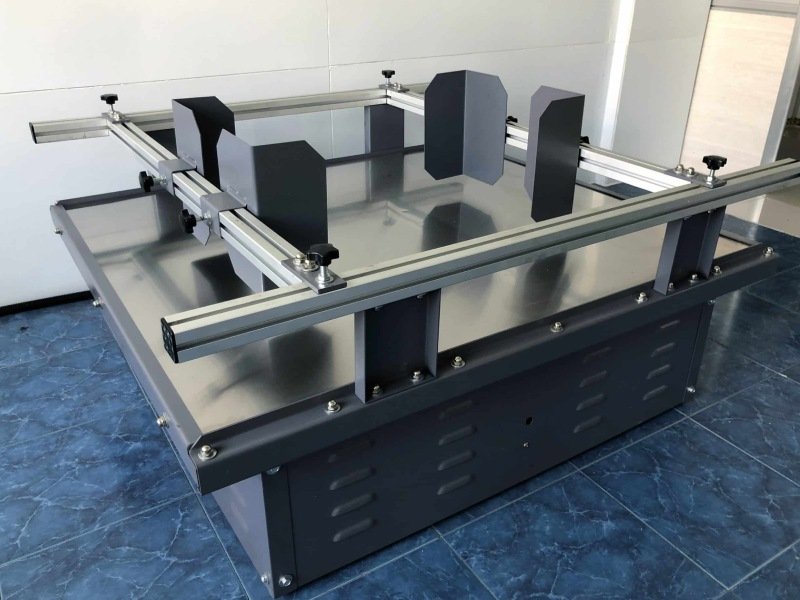When it comes to constructing or refurbishing doors, cabinets, or even furniture, one of the most crucial components to consider is the hinge. Among the various types available, corner hinges stand out due to their specialized design that allows them to be installed at the corner of a door or panel. These hinges not only provide the necessary support for movement but also offer specific functionality based on the door’s structure.
But why are corner hinges important?
For buyers, selecting the right type of corner hinge is critical. It impacts the durability, appearance, and even the ease of use of the door or panel. Whether you're installing kitchen cabinets, working on a piece of furniture, or setting up industrial doors, using the correct corner hinge ensures smooth operation and long-term stability.
In this article, we will explore the various types of corner hinges, the materials they are made of, and the specific advantages each brings to the table. By the end of this guide, you'll have a comprehensive understanding of which corner hinge is right for your project and how to install it correctly.
Types of Corner Hinges
There are several types of corner hinges available in the market, each designed for specific applications. Here’s an overview of the most common types, so you can choose the right one for your needs:
1. 90-Degree Corner Hinges
90-degree corner hinges are designed to open doors at a right angle, making them perfect for cabinets, cupboards, and small furniture pieces. These hinges are common in kitchen cabinets, allowing doors to swing out at a clean 90-degree angle without overextending.
They offer simplicity and efficiency for residential uses, especially in areas where space is limited, and you want doors to remain flush when closed. These hinges are easy to install and provide a clean look, particularly when the door needs to remain inside the frame rather than overlaying it.
2. Adjustable Corner Hinges
As the name suggests, adjustable corner hinges offer flexibility in alignment. These hinges allow users to adjust the tension and positioning of the door after installation, making them a popular choice for projects where precision is required.
Adjustable corner hinges are ideal for heavy or frequently used doors that might shift over time or need realignment. They are commonly found in high-use areas like industrial settings, commercial kitchens, and office furniture, where repeated use could cause the door to misalign without the option of adjusting.
3. Heavy-Duty Corner Hinges
For larger, heavier doors, heavy-duty corner hinges provide the support needed. These hinges are robust and designed to handle weight, making them suitable for industrial doors, garage doors, or heavy entryway doors.
Constructed from strong materials like steel or iron, they can withstand harsh conditions and continuous use. Some heavy-duty corner hinges also have ball bearings, which reduce friction and allow the door to swing smoothly, even when bearing a significant load.
4. Overlay Corner Hinges
Overlay corner hinges are typically used when the door or panel overlays the edge of the frame. These hinges are common in modern cabinetry where the door extends beyond the cabinet frame, giving a sleek, seamless look.
Buyers looking for a modern aesthetic for kitchen or bathroom cabinetry often choose overlay corner hinges because they allow the door to fully cover the frame, leaving no gaps. This type of hinge is ideal for buyers seeking a clean, contemporary finish.
5. Concealed or Invisible Corner Hinges
One of the most sought-after options for high-end cabinets and furniture is the concealed corner hinge. These hinges remain hidden when the door is closed, providing a smooth, uninterrupted surface.
These are frequently used in minimalist furniture designs or in homes where aesthetics are paramount. They also work well in security settings where visible hardware might be undesirable.
6. Specialty Hinges for Specific Uses
In addition to these common types, there are also specialty corner hinges designed for specific purposes, such as fire-rated hinges for fire doors, marine-grade hinges for use in boats or yachts, and soft-close hinges that ensure a door or lid closes gently, preventing slamming.
Materials Used in Corner Hinges
Choosing the right material for corner hinges is critical for ensuring durability, aesthetics, and functionality. The material affects not only the strength and longevity of the hinge but also its resistance to environmental factors like moisture, rust, or wear. Here’s an overview of the most commonly used materials in corner hinges:
1. Brass Hinges
Brass is a popular material for hinges because it combines strength with a luxurious appearance. Brass hinges have a natural resistance to rust and corrosion, making them suitable for use in both indoor and outdoor applications. The material is also relatively soft, which means it's easy to machine into intricate designs—ideal for decorative purposes in high-end furniture or cabinetry.
For buyers looking for hinges that provide both durability and aesthetic appeal, brass is an excellent choice, especially in traditional or vintage-style furniture. It also requires minimal maintenance to keep its golden sheen.
2. Stainless Steel Hinges
Stainless steel is widely known for its durability and corrosion resistance, making it a go-to choice for both indoor and outdoor applications where strength and weather resistance are key concerns. These hinges are often found in industrial and commercial settings due to their ability to withstand heavy use and exposure to harsh environments.
For buyers needing heavy-duty performance or working in areas with moisture (like kitchens, bathrooms, or outdoor settings), stainless steel is ideal. It’s a low-maintenance option that resists rusting, staining, and pitting, even under extreme conditions.
3. Aluminum Hinges
Aluminum is a lightweight but strong material, making it a good choice for lighter doors, cabinets, or panels. While not as strong as stainless steel, aluminum hinges are still durable and provide excellent resistance to corrosion, especially in marine or coastal environments where exposure to salt water might otherwise damage steel or iron hinges.
For buyers focused on lightweight installations, such as cabinets, small doors, or marine applications, aluminum provides a cost-effective and durable solution. It’s also easy to machine, making it a common material in adjustable and specialized corner hinges.
4. Iron/Steel Hinges
Iron and carbon steel are commonly used in heavy-duty applications due to their strength and durability. Steel hinges are often used for larger doors, gates, or industrial machinery, where they need to support substantial weight without bending or breaking.
However, regular steel hinges are prone to rust if not properly treated or maintained, so they are often coated with protective finishes such as galvanization or powder coatings to extend their lifespan. These hinges are preferred in heavy-load settings where functionality and durability are key, although buyers should be aware of the need for regular maintenance to prevent rust.
5. Zinc Alloy Hinges
Zinc alloy is a more affordable option that offers a balance between strength and corrosion resistance. Zinc alloy hinges are often used in lower-cost furniture or cabinetry, where they can provide reliable performance without the high cost of brass or stainless steel.
While they might not last as long in harsh environments, zinc alloy hinges are often used in indoor residential applications, where exposure to moisture is limited.
Other Materials
Some corner hinges are also made from plastic or nylon, especially for lightweight applications such as small cabinetry or furniture doors. These materials are typically used for low-cost projects or in areas where the load is minimal and corrosion resistance is not a major concern.
Applications of Corner Hinges
Corner hinges are versatile components used in a wide variety of applications. Whether you are working on a small household project or a large industrial door, the right type of hinge can make all the difference. Below are some of the most common applications where corner hinges play a crucial role:
1. Residential Uses
In homes, corner hinges are frequently used in cabinetry, furniture, and doorways. They provide the necessary support for everyday use, ensuring doors open and close smoothly without strain. Whether you’re working on a kitchen remodel or installing new bedroom doors, corner hinges are often used for their durability and ease of installation.
For homeowners, selecting the right hinge ensures that the doors and cabinets remain functional and aligned over time. For instance, concealed hinges are often chosen for high-end kitchen designs, offering a sleek, modern look without visible hardware.
2. Commercial and Industrial Uses
In industrial or commercial settings, corner hinges are often required to support heavier loads. These include warehouse doors, factory gates, or even entryways in office buildings. In these cases, heavy-duty corner hinges are essential for supporting the door’s weight and ensuring that it can endure frequent use.
In industrial applications, the durability and resistance to wear are key factors, which is why steel and stainless steel hinges are frequently used. Adjustable hinges are also common in these settings because they allow for easy realignment, which is crucial in environments where doors may shift or experience heavy traffic.
3. Automotive and Machinery
In automotive applications, corner hinges are used in compartment doors, tool storage panels, and other areas where reliable movement is necessary. These hinges must be durable enough to withstand vibrations and mechanical stress. For heavy vehicles or industrial machinery, heavy-duty steel hinges are often used.
In marine environments, hinges must withstand exposure to saltwater, which can cause corrosion. Aluminum or stainless steel corner hinges are typically used in yachts, boats, and other marine vessels to ensure long-lasting performance in these harsh conditions.
Advantages of Different Corner Hinges
Understanding the advantages of the various types of corner hinges is key to making an informed purchasing decision. Whether you need a hinge for residential, commercial, or industrial purposes, knowing the benefits of each type will help you find the right solution.
1. Strength and Durability
Certain materials like stainless steel and heavy-duty iron hinges are built for strength. For buyers looking to support large, heavy doors or industrial panels, these materials are ideal because they offer high load-bearing capacity and longevity. They are also resistant to wear and tear, even in heavy-use environments.
2. Aesthetic Appeal
For buyers interested in design and aesthetics, hinges made from materials like brass or concealed corner hinges offer a clean, sophisticated look. Brass hinges, with their golden tone, add a touch of elegance to furniture or cabinetry, while concealed hinges are perfect for minimalist designs where the hardware should remain out of sight.
3. Adjustable Options for Perfect Alignment
One of the biggest advantages of adjustable corner hinges is their flexibility. These hinges allow users to adjust the alignment of the door even after installation, ensuring that the door stays perfectly straight. This feature is particularly useful for heavy or frequently used doors, as it prevents sagging or misalignment over time.
4. Concealed Options for a Modern Look
For buyers who want to maintain a clean, modern aesthetic, concealed corner hinges are a great option. These hinges remain hidden from view when the door is closed, giving the furniture or cabinet a smooth, uninterrupted appearance. They are commonly used in high-end kitchens or luxury furniture, where design and functionality go hand-in-hand.
5. Corrosion Resistance
For applications exposed to moisture, such as outdoor settings, kitchens, or bathrooms, hinges made from stainless steel or aluminum offer the benefit of corrosion resistance. These materials are designed to withstand rust and degradation, ensuring that the hinge continues to function smoothly even in humid or wet conditions.
How to Choose the Right Corner Hinge
Selecting the right corner hinge for your project depends on several factors. As a buyer, you’ll want to consider the following aspects to ensure you make the best choice for your specific application:
1. Door Weight
One of the most important factors is the weight of the door or panel you’re attaching. Heavy-duty corner hinges made of materials like stainless steel or iron are necessary for large doors or industrial applications. For lighter doors, aluminum or brass hinges might suffice.
2. Frequency of Use
If the door or panel will be opened and closed frequently, durability and wear resistance become critical. Adjustable hinges are also ideal for frequently used doors, as they allow for periodic realignment to prevent sagging.
3. Aesthetic Requirements
If you’re working on a design-focused project such as custom furniture or high-end cabinetry, concealed hinges or decorative brass hinges might be your best option. These hinges combine functionality with a polished, sophisticated look.
4. Environment
For outdoor or moisture-prone areas, corrosion-resistant materials like stainless steel or aluminum are the best choices. These materials can withstand environmental factors that might otherwise damage or rust the hinge.
5. Cost
Finally, cost is always a factor. While brass or stainless steel hinges might cost more, they offer superior durability and corrosion resistance, making them worth the investment for long-term use.
Installation Process of Corner Hinges
Installing corner hinges correctly is crucial to ensuring that doors or panels function properly. Here is a step-by-step guide to installing corner hinges:
1. Gather Tools and Materials
Before you begin, gather the necessary tools:
- Screwdriver or drill
- Measuring tape
- Pencil or marker
- Screws (appropriate size for your hinge)
- Level
2. Mark the Placement
Use a measuring tape and pencil to mark the placement of the hinges on both the door and the frame. Ensure that the hinges are evenly spaced for proper weight distribution.
3. Pre-Drill Holes
To avoid splitting the wood or damaging the material, pre-drill holes at the marked points for the screws. Make sure the holes are slightly smaller than the screws to ensure a tight fit.
4. Attach the Hinges
Position the hinge against the door and secure it with screws. Start by attaching the hinge to the door first, then to the frame. Make sure the hinge is flush with the surface for a smooth operation.
5. Align and Test
Once the hinges are attached, test the door to ensure it opens and closes smoothly. Adjust the alignment as necessary, especially if you’re using adjustable hinges. Use a level to check that the door is straight.
6. Final Tightening
After testing the door, tighten all screws securely. Make sure there is no looseness in the hinge, as this could cause future misalignment or sagging.
Maintenance and Care for Corner Hinges
Proper maintenance is essential to ensure the longevity of your corner hinges, regardless of the material or application. Here are some general tips for caring for your hinges:
1. Regular Cleaning
Over time, dirt and grime can accumulate in the hinges, causing them to stick or squeak. Regularly clean the hinges using a damp cloth and mild soap. For metal hinges, you can use a metal cleaner to restore their shine.
2. Lubrication
To keep hinges operating smoothly, apply lubricating oil or grease to the pivot points every few months. This will reduce friction and prevent squeaking.
3. Check for Wear and Tear
Periodically inspect the hinges for any signs of wear, such as rust, corrosion, or loose screws. Tighten any loose screws and replace hinges that show signs of excessive wear.
4. Repainting or Refinishing
If the hinges are exposed to harsh weather or have been in use for a long time, you might need to repaint or refinish them. Iron or steel hinges that are rusting can be sanded down and repainted with a rust-resistant coating.
Frequently Asked Questions (FAQs) About Corner Hinges
1. How do I know which size of corner hinge to buy? When purchasing hinges, consider the size and weight of the door. Larger, heavier doors will need bigger hinges to support the load. Check the specifications on the packaging for weight capacity recommendations.
2. Can I install corner hinges myself? Yes, installing corner hinges is a relatively straightforward task that can be done with basic tools like a screwdriver or drill, measuring tape, and screws. Just be sure to measure and align the hinges carefully for smooth operation.
3. Are corner hinges more expensive than regular hinges? Depending on the material and type, corner hinges can be more expensive than standard hinges, particularly heavy-duty or concealed hinges. However, the investment is often worth it for durability and functionality.
4. How can I prevent my corner hinges from rusting? For outdoor or moisture-prone environments, choose corrosion-resistant materials like stainless steel or aluminum. Additionally, regular cleaning and applying a protective coating can help extend the life of your hinges.
Conclusion
Selecting the right corner hinge is crucial to ensuring the functionality, durability, and aesthetic appeal of your doors, cabinets, or furniture. Whether you need a heavy-duty hinge for an industrial door or a concealed hinge for a sleek modern look, understanding the various types, materials, and installation processes will help you make an informed decision.
By considering factors like door weight, environment, and aesthetic preferences, buyers can choose the best hinge for their specific needs. Remember to maintain and care for your hinges regularly to ensure their long-term performance and functionality.







